Today’s Current Affairs: 28th Dec 2023 for UPSC IAS exams, State PSC exams, SSC CGL, State SSC, RRB, Railways, Banking Exam & IBPS, etc
Table of Contents
Card-On-File Tokenization : Reserve Bank Of India
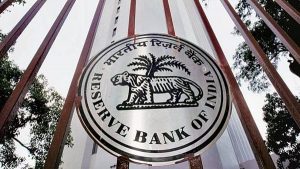
In order to make digital payments more secure, safe and sound the Reserve Bank of India (RBI) has now enabled card-on-file tokenization (CoFT) through card issuing banks and institutions.
- Tokenization refers to replacement of actual credit and debit card details with an alternate code called the “token”.
- It is a combination of card, token requestor and device.
- The card detail when stored with a merchant is known as card-on-file (CoF).
- This token is a randomly generated string of characters that has no intrinsic value and is meaningless outside of the context of a specific transaction.
- The token is used as a surrogate for the actual card details, making it more secure to store and transmit.
- Generation of CoFT tokens for a card can be enabled through mobile banking and internet banking channels.
- The token can be generated only on explicit customer consent and with AFA (additional factor authentication) validation.
- The cardholder may tokenize the card at any time of their convenience, either on receipt of the new card or at a later stage.
- The cardholder can select the merchants with whom he/she wishes to maintain tokens.
- The card token so issued may be either by the card network or the issuer or both.
Sixth NSA Meeting Of The Colombo Security Conclave:

India’s National Security Adviser (NSA) recently took part in the sixth NSA meeting of the Colombo Security Conclave (CSC).
- Colombo Security Conclave (CSC) is a regional security grouping comprising India, Sri Lanka, the Maldives and Mauritius.
- The CSC, initially known as the Trilateral for Maritime Security Cooperation, evolved out of trilateral meetings between NSAs and Deputy NSAs from India, Maldives, and Sri Lanka, starting in 2011.
- It came to a standstill after 2014 due to rising tensions between India and the Maldives.
- After its revival and re-branding as the CSC in 2020, Mauritius was added as a member of the grouping.
- Current members of CSC include India, Maldives, Mauritius, and Sri Lanka, while Bangladesh and Seychelles are the two observer nations.
- Cooperation under the conclave focuses on five pillars that is maritime safety and security, countering terrorism and radicalisation, combating trafficking and transnational organised crime, cyber-security and protection of critical infrastructure, and humanitarian assistance and disaster relief.
- A permanent secretariat, based in Colombo, was established in 2021 to coordinate all activities and implement decisions made at the NSA level.
Black-Necked Grebe : Sighted

In a significant environmental development, a Black-necked Grebe was recently sighted for the first time at Hokersar wetland.
- Black-necked Grebe or eared grebe, is a member of the grebe family of water birds.
- Scientific Name: Podiceps nigricollis
- It has a widespread breeding area, with migratory populations covering an extensive range of Eurasia and North America, while a resident population is also found in subtropical Africa.
- It usually measures between 28 and 34 centimetres in length and weighs 265 to 450 grams
- It has a wingspan range of 20.5-21.6 in (52-55 cm).
- Its breeding plumage features a distinctive ochre-coloured plumage that extends behind its eye and over its ear coverts.
- Conservation Status:
- IUCN: Least Concern
Pterosaur : New Species

Palaeontologists from China and Brazil recently identified a new species of chaoyangopterid pterosaur
- A pterosaur is any of the flying reptiles that flourished during all periods (Triassic, Jurassic, and Cretaceous) of the Mesozoic Era (252.2 million to 66 million years ago).
- Although pterosaurs are not dinosaurs, both are archosaurs, or “ruling reptiles,” a group to which birds and crocodiles also belong.
- They were also the first animals after insects to evolve powered flight—not just leaping or gliding, but flapping their wings to generate lift and travel through the air.
- Pterosaurs were not only the first reptiles capable of flight. They were also the first vertebrates to fly.
- It included the largest vertebrate ever known to fly: the late Cretaceous Quetzalcoatlus.
- The appearance of flight in pterosaurs was separate from the evolution of flight in birds and bats; pterosaurs are not closely related to either birds or bats and thus provide a classic example of convergent evolution.
- Their wings were formed by a sophisticated membrane of skin stretching from the thorax to a dramatically lengthened fourth finger.
- The pterosaurs went extinct at the end of the Cretaceous period, around 65.5 million years ago, during the mass extinction known as the Cretaceous-Tertiary extinction event (K-T extinction event).
Chronic Wasting Disease:
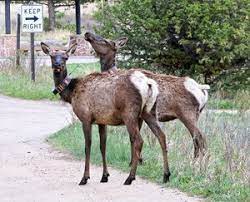
In a concerning development, scientists are sounding the alarm about the potential spread of a condition known as chronic wasting disease (CWD) from animals to humans.
- Chronic Wasting Disease (CWD) also known as Zombie deer disease, is a neurological disorder affecting deer and other cervids (members of the deer family) caused by the abnormal growth of a misfolded protein called a prion.
- This prion causes healthy brain proteins to become abnormal, leading to a range of symptoms.
- CWD is contagious; it can be transmitted freely within and among cervid populations.
- CWD is transmitted directly through animal-to-animal contact and indirectly through contact with objects or environments contaminated with infectious material (including saliva, urine, faeces, and carcasses of CWD-infected animals).
- It may take over a year before an infected animal develops symptoms, which can include drastic weight loss (wasting), stumbling, listlessness, and other neurologic symptoms.
- CWD is particularly concerning because it has the potential to affect both animals and humans, with the possibility of transmission through the consumption of infected meat.
- CWD can affect animals of all ages, and some infected animals may die without ever developing the disease.
- CWD is fatal to animals, and there are no treatments or vaccines.
Gaucher Disease:
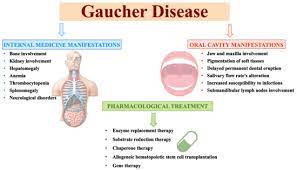
Children suffering from lysosomal storage disorders like Gaucher disease are facing a bleak future as their treatment has been stopped due to the exhaustion of one-time support from the Union health Ministry.
- Gaucher disease is an inherited lysosomal storage disorder (LSD).
- It is a type of disease that causes fatty substances (sphingolipids) to build up in your bone marrow, liver and spleen.
- The sphingolipids weaken bones and enlarge your organs.
- Symptoms: Enlarged spleen, liver, eye movement disorders and yellow spots in the eyes etc.
- There are three types of Gaucher disease:
- Type1: It affects your spleen, liver, blood and bones. It doesn’t affect your brain or spinal cord. Gaucher disease type 1 is treatable, but there’s no cure.
- Type 2: A rare form of the disorder appears in babies younger than 6 months It causes an enlarged spleen, movement problems and severe brain damage. There’s no treatment for Gaucher disease type 2.
- Type 3: It is the most common form which appears before age 10 and causes bone and organ abnormalities and neurological (brain) problems.
- Treatments can help many people with Gaucher disease type 3 live into their 20s or 30s. There’s no cure for Gaucher disease, but treatments can relieve symptoms and greatly improve quality of life.
Indian Navy’s Information Fusion Centre For Indian Ocean Region (IFC-IOR):
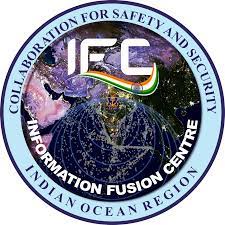
The Indian Navy’s Information Fusion Centre for Indian Ocean Region (IFC-IOR) played a quiet but crucial role in the backend as the hijacking incident of (Merchant Vessel) m.v. Ruen unfolded by coordinating between the Navy and with the ship owner.
- Indian Navy’s Information Fusion Centre for Indian Ocean Region was established by the Government of India at Information Management and Analysis Centre (IMAC) Gurugram in 2018.
- The centre aims at strengthening maritime security in the region by building a common coherent maritime situation picture and acting as a maritime security information sharing hub.
- The Centre also hosts International Liaison Officers (ILOs) from partner nations.
- The Centre hosts ILOs from 12 partner nations, Australia, France, Italy, Japan, Maldives, Mauritius, Myanmar, Sri Lanka, Seychelles, Singapore, United Kingdom and United States of America.
- The Centre monitors the Indian Ocean and adjoining seas to understand each region and generates various periodic reports, Weekly Maritime Security Updates (WMSU), Monthly Maritime Security Updates (MMSU), Half Yearly Overviews and Annual Reports.
- IMAC is a National Maritime Domain Awareness (NDMA) centre.
- It was set up for connecting all the operational Centres and lower rungs of the Indian Navy and the Coast Guard located along the huge coastline and the island territories.
- It is jointly operated by the Navy and Coast Guard.
- This is the main centre of the National Command Control Communication and Intelligence System (NC3I).
- And it tracks vessels on the high seas and gets data from the coastal radars.
Mission Karmyogi : Extension
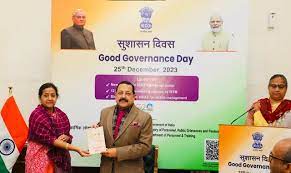
On Good Governance Day, Union Minister Dr Jitendra Singh launched the Extended Version of Mission Karmayogi in New Delhi.
- My iGOT Delivers targeted training courses on the home page of individual officers, addressing their unique capacity-building needs as identified in the Capacity-Building Plan for their Ministries/Departments.
- This ensures a highly personalized, focused, and targeted capacity-building experience, aligning individual and organizational learning needs.
- Blended Programs Facilitates equitable access to training methodologies across all levels, meeting dynamic training needs.
Integrates traditional offline (in-person) classroom courses with online learning components, allowing officers and faculty to benefit from the flexibility and convenience of online courses while retaining the invaluable benefits of face-to-face classroom interactions. - Curated Programs Designed to cater to diverse learning needs of Ministries/Departments and Training Institutions.
- Course Providers can curate relevant content, resources, and assessments from the iGOT repository with a Programmatic approach, providing a tailored learning journey.
- 12 Domain-Specific Capacity Building E-learning Courses Developed in two months as part of the Annual Capacity Building Plan (ACBP) of the DOPT by Karmayogi Digital Learning Lab (KDLL) of DoPT.
- These 12 courses directly address the domain competency requirements of Civil Servants working in DoPT and assist other Government organizations in handling functional matters effectively on a day-to-day basis.
- VIKAS (Variable & Immersive Karmayogi Advanced Support) A new blended learning program for capacity-building of middle management civil servants in the Central Secretariat.
- VIKAS is a blended program with iGOT, consisting of 33 hours complemented by 30 hours of offline training at ISTM.
- It focuses on the development of functional, behavioral, and technological competencies required in the Central Government.
Mission Karmayogi:
- It is a mission aimed to transition civil services from ‘Rules based’ to ‘Roles based’ Human Resource (HR) Management by aligning work allocation of civil servants by matching their competencies to the requirements of the post, thereby leading to “an effective citizen-centric civil service”
MedTech Mitra:
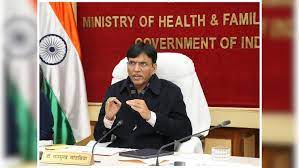
The Union Minister of Health and Family Welfare in India, has launched the “MedTech Mitra” initiative to empower innovators and advance healthcare solutions in the country.
- The initiative aims to support and collaborate with technology innovators and startups in the medical technology sector.
- The goal is to harness innovation to enhance healthcare delivery and address healthcare challenges.
- MedTech Mitra is a platform that will help young talents of country in shaping their research and getting regulatory approval.
- It will facilitate indigenous development of affordable, quality MedTech devices and diagnostics leading to reduction in import dependence (presently around 80%) in MedTech.
- MedTech Mitra is part of the government’s efforts to promote innovation in the health sector and improve healthcare services in the country.
El Nino Effect And Cases Of Dengue:
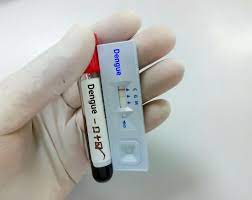
Studies show that El Nino effect may have caused the cases of dengue to have increased globally.
- There has been a ten-fold increase in dengue cases between the years 2000 and 2019, according to an analysis by the World Health Organization (WHO).
- Dengue is a vector-borne disease caused by dengue virus (DENV).
- It is transmitted to humans through the bite of an infected female Aedes Aegypti mosquito.
- The mosquito becomes infected when it feeds on the blood of a person infected with the virus.
- Dengue cannot be spread directly from person to person.
- It is more common in tropical and subtropical climates.
- It is mostly in urban and semi-urban areas.
- Symptoms:- High fever (40°C/104°F) and Severe headache
- Most cases of dengue fever can be treated at home with pain medicine.




